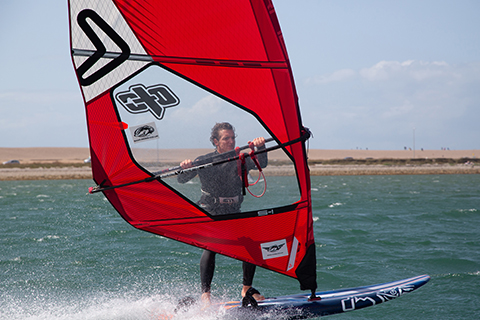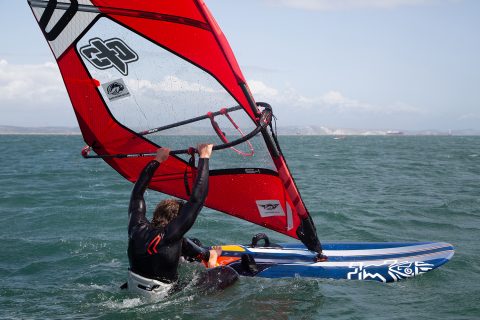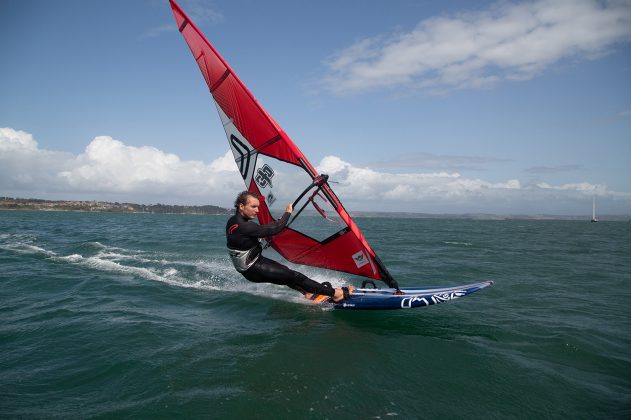Want to improve your windsurfing? Then start with your front hand says Sam Ross; he tells us why.
Words Sam Ross // Photos Greg Dennis
We quite often get trapped into the methods of doing things, with much time taken arguing which is the correct one. Good technique or bad technique is often in the eye of the beholder and if you get the intended output then it’s probably working ok. However whilst there are millions of methods, there are only a few key principles. If we can understand these then we can tweak our method to suit. The great news about principles is they tend to be less move specific, so as we work through different moves we can try and re-apply the principle and hopefully speed up our learning. So to start, let’s look at the rig.
UPRIGHT RIG
In short you want a modern rig to be upright and sheeted in the right amount. An upright rig should help us all the way from our first beach starts and water starts, right through to carve gybes and forward loops. If we can get the rig upright, we should be more planted on the board and more stable as well, making sure we are in the best position to get the rig/mast further away from us. It sounds complicated, but most of this can be achieved by doing one thing – moving your front hand back towards the harness lines. In fact to go a bit further into it, if your harness lines are in a neutral position, your front hand should be right by your front harness line.

Hand back plants the rig upright and forward in the gybe, helping keep the board flat on entry and allowing you to move across the board under control.

With the front hand back, the rig gets upright quicker, generating more lift, but also stopping the board turning off the wind.
EFFECTS
Let’s have a look at the impact having your front hand right by your front harness line might have on different scenarios.
Beach start/Waterstart: Gets the rig upright more easily and allows you to pull more weight down through the mast foot. Should allow you to get up in deeper water or less wind more easily.
Harness: You’ll be increasing your distance from the rig, so be able to use longer lines and be more upright on the board.
Footstraps: Rig is further forward, and so helps keep the board flatter. Should help stop the board spinning up into wind when you go for the straps.
Blasting: Rig more upright, so board flatter. As you go faster, you should now be able to sheet in more as the front arm extending will help bring the clew in.
Gybing: The front hand further back will get the mast forward and help engage the rail in gybes. You’ll be more sheeted in automatically. Also if your front hand is back you can get your back hand further back.
Looping: Front hand back allows the rig to move across your body more. This will help give a more lateral rotation rather than end over end or an accidental cheese roll.
We get pretty obsessed about moving the back hand in windsurfing. In fact so many higher level moves rely on it, for example – carve gybe, duck gybe, bottom turn and forward loop. However how far you can move your back hand is totally limited by your front hand position. So if you’re struggling to get that back hand way down the boom. Try bringing the front hand back first and see what that does to your reach.
“The front hand further back will get the mast forward and help engage the rail in gybes.”


